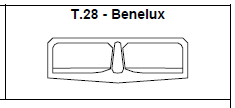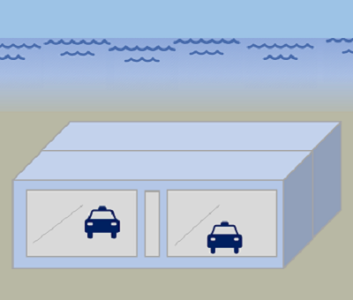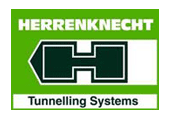Benelux Tunnel
TOTAL IMMERSED LENGTH: 744 m
DEPTH AT BOTTOM OF STRUCTURE: 24 m
HEIGHT: 7.84 m
WIDTH: 23.9 m
ENVIRONMENTAL CONDITIONS: Swift river currents created sedimentation problems in the dredged trench
FABRICATION METHOD: At casting basin constructed for the tunnel. All eight sections were cast at the same time.
DEPTH AT BOTTOM OF STRUCTURE: 24 m
HEIGHT: 7.84 m
WIDTH: 23.9 m
ENVIRONMENTAL CONDITIONS: Swift river currents created sedimentation problems in the dredged trench
FABRICATION METHOD: At casting basin constructed for the tunnel. All eight sections were cast at the same time.
Rotterdam,
Netherlands

Ministry of Public Works; Rijkswaterstaat
N.V. Amsterdamsche Ballast Mij; Christiani & Nielsen N.V.; Internationale Gewapendbeton-Bouw N.S.; Nederlandsche Aanneming Mij, v/h firma H.F. Boersma and N.V. Nederlandsche Beton Maatschappij (N.V. Nestum II)
Locks and Weirs Department of the Rijkswaterstaat
93m
744m
24m
Project construction
1967-04-30
8
Two tubes; two lanes of traffic in each tube
7.84m
23.9m
Tunnel is completely curved, with all tubes cast as identical curved sections
At casting basin constructed for the tunnel. All eight
sections were cast at the same time.
sections were cast at the same time.
Took place in casting basin.
Swift river currents created sedimentation problems in the dredged trench
Used four pontoons for lowering. A tower for survey was provided at the outboard end of
the tube; a tower for access and control was provided on the inboard end.
the tube; a tower for access and control was provided on the inboard end.
Pulled together using a
hook, the Gina-type gasket
was engaged; conventional
dewatering followed to
make up the joint
hook, the Gina-type gasket
was engaged; conventional
dewatering followed to
make up the joint
Bituminous membrane, protected by reinforced concrete
Used foundation plates supported on layer of gravel for temporary grade adjustment.
Sand was then jetted under tunnel elements, after acceptable conditions were obtained.
Silt skirts were used to protect the area under the elements from being filled with soft silt
scour off the bottom of the river
Sand was then jetted under tunnel elements, after acceptable conditions were obtained.
Silt skirts were used to protect the area under the elements from being filled with soft silt
scour off the bottom of the river














